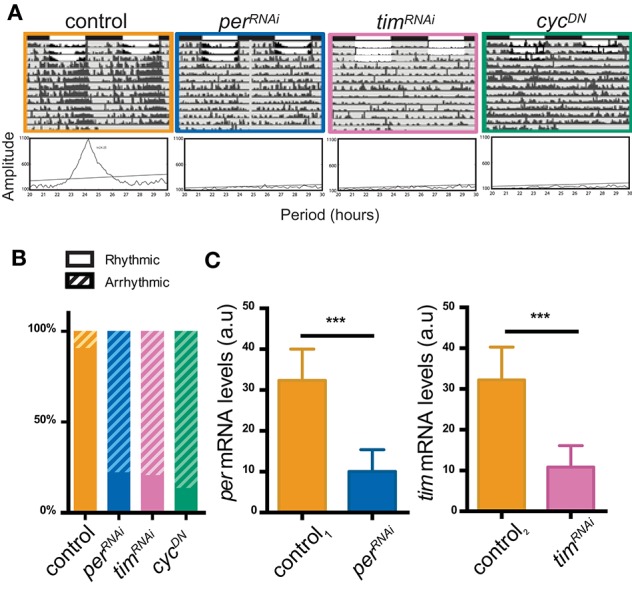Figure 1.

Impaired LNv clocks result in disrupted locomotor activity patterns. (A) Representative double-plotted actograms and their respective periodograms of the different genotypes: UAS-dcr2, UAS-perRNAiI (#40878), UAS-timRNAiI (#29583), and UAS-cycDN under the control of pdf-Gal4. Locomotor activity of individual flies was recorded for 4 days under 12:12 LD cycles and then transferred to DD (gray area) for 9 additional days. In the actograms, white bars represent day, black bars represent night. For every fly actogram, periodograms of the free-running rhythm in DD are shown (bottom). Rhythmic behavior of a typical male control is shown (orange). perRNAi (in blue), timRNAi (in pink), and cycDN (in green) expressing animals are shown. All genetic manipulations gave rise to a largely arrhythmic locomotor behavior. (B) Percentage of rhythmicity. Data represents at least three independent experiments; over 44 flies were analyzed. (C) Validation of the effectiveness of the RNAis employed. Both UAS-perRNAi and UAS-timRNAi were expressed under tim-Gal4. Levels are normalized to rpl49. Both tim and per mRNA levels are reduced compared to their respective control. Student's t-test showed a significant difference in levels of expression. Triple asterisks (***) indicate significant differences with p < 0.001. Three independent experiments were performed.
